Hello and welcome to this dev diary where we will be looking into some new map visuals that’ll be added in the future. As the team grows, we’ve had the opportunity for our new artists to warm up by sprucing up the map a little. Among the things we’ll show off today, chief is the Canterbury Cathedral and its evolution over time: made by our new Environment artist Joel, who’s written about his process and the research involved.
►
Read more about Dev Diary #115 on our forums![pdxint.at]
Building a Monument – Canterbury Cathedral
The Original Church - Tier 1 When creating the first tier of the Canterbury Cathedral, which references the Anglo-Saxon church extant in the 867 & 1066 start dates, it was important to acknowledge the lack of available visual reference material. Historically speaking, the Anglo-Saxon church was burnt down in 1067, but we do have some conceptual renditions and blueprints of the estimated building layout to work from, courtesy of the archeologists (our heroes).
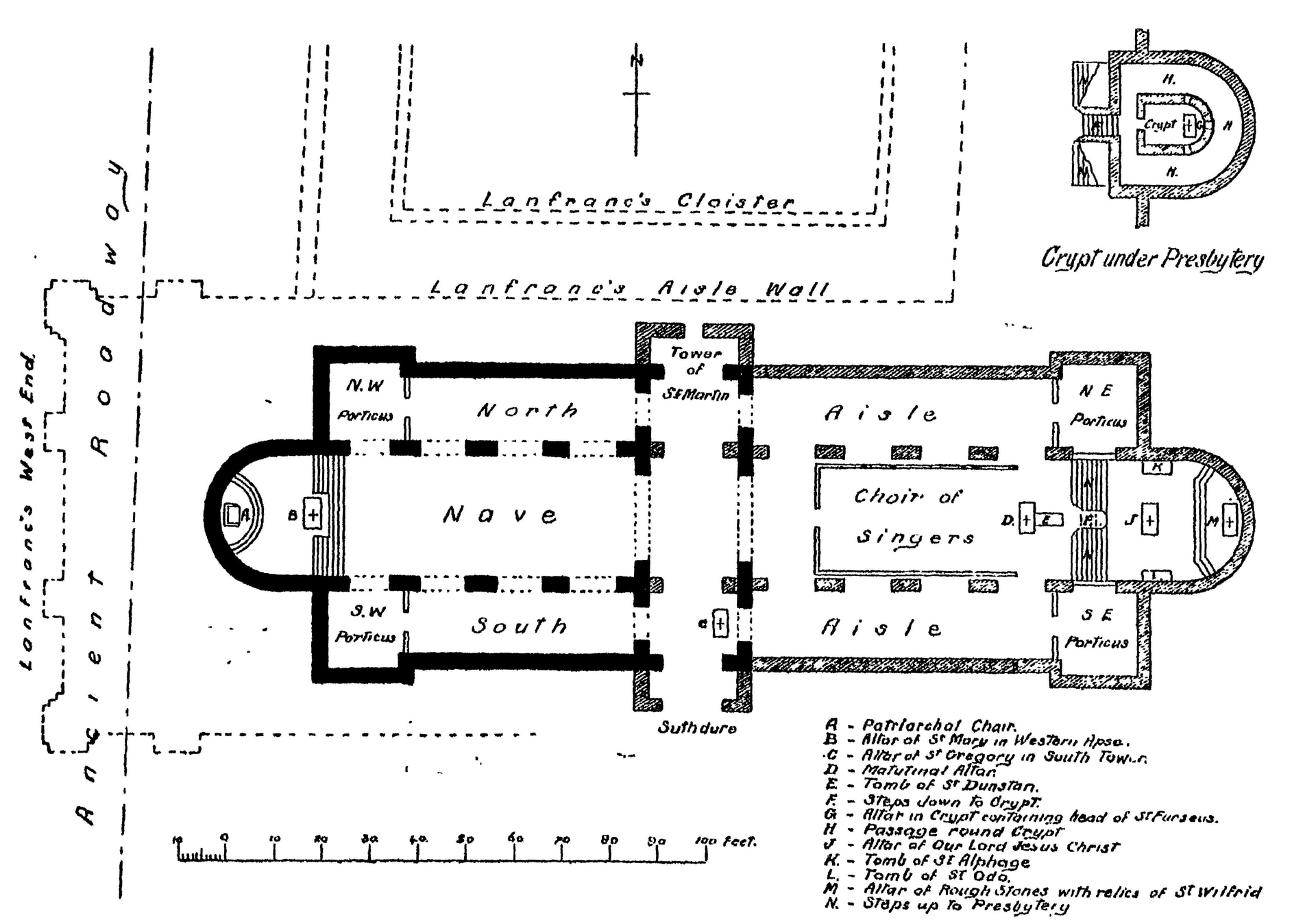
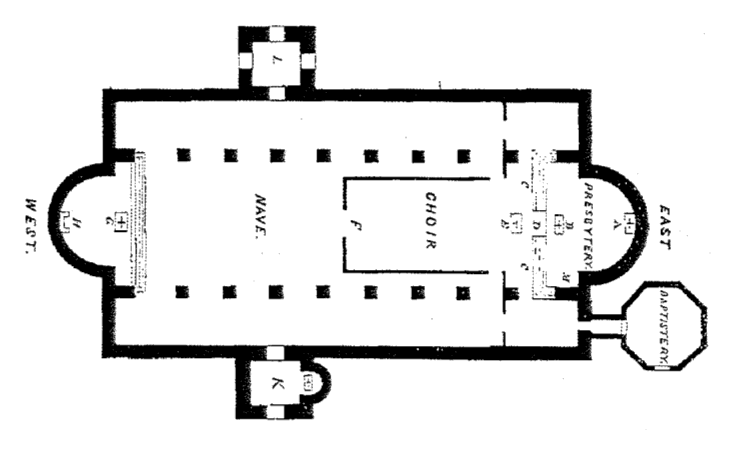 Sometimes luck strikes and blueprints or estimated ones can be found.
Sometimes luck strikes and blueprints or estimated ones can be found.From this, I created a fairly basic interpretation of the church that serves well as the first/starting stage for the Canterbury Cathedral. Additional geometry, like pillars and an external house, was added to the building to create a more compelling in-game silhouette.
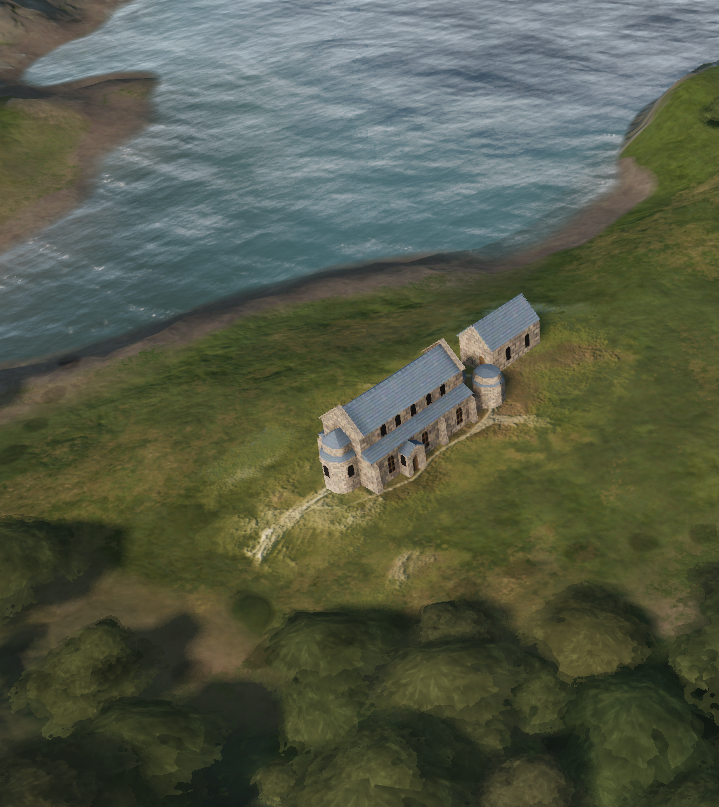 The original Anglo-Saxon church - Tier 1
The original Anglo-Saxon church - Tier 1
The Norman Cathedral - Tier 2 After the first fire, a second church was built in its place, distinctively making use of the Romanesque style. As we move forward in history, more references become available, and fortunately the church foundations are described as rather similar to the church of today. The more significant differences to modern Canterbury Cathedral are, for example, the front and main towers: they are still Romanesque.
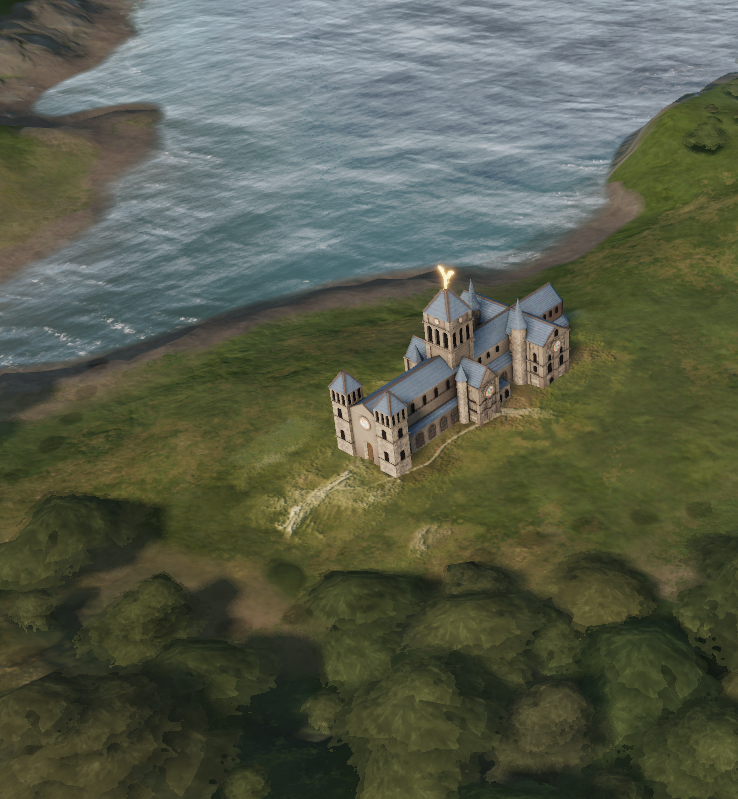 Canterbury Cathedral - Tier 2
Canterbury Cathedral - Tier 2 Romanesque and Gothic If this happens to be your first time coming across these terms, some explaining might be in order. Romanesque and Gothic are two styles of architecture which defined buildings and churches throughout the Medieval era. Romanesque, the older of the two, emerged sometime around the year 1000 and lasted until around 1150. It’s a style arising from and defined by Germanic, Byzantine and old Roman influences, favoring circular Roman arches and a more solid-looking facade compared to later churches.
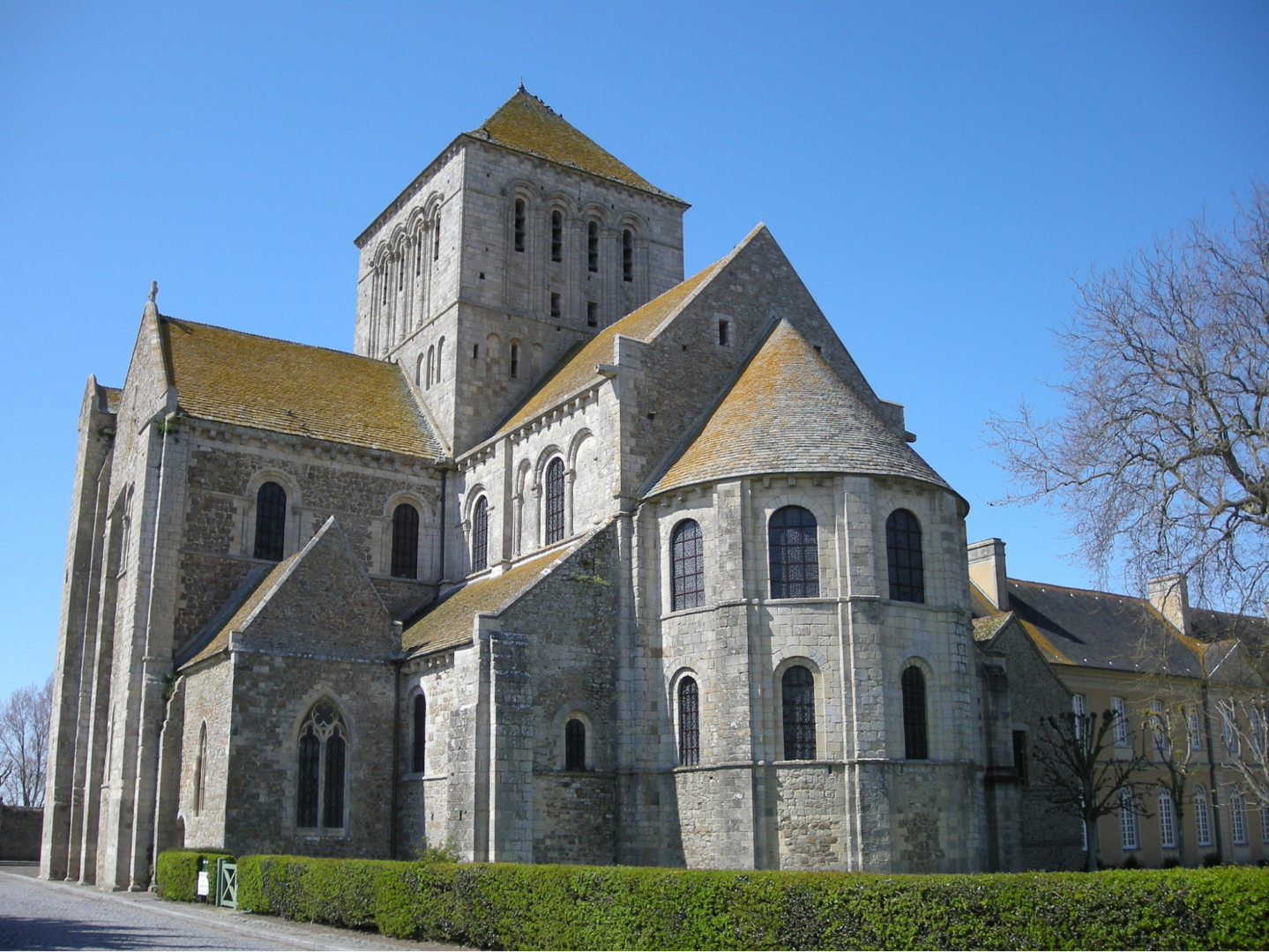 Romanesque Abbaye de Lessay
Romanesque Abbaye de LessayFrom the Romanesque emerged the Gothic in the 12th-13th centuries. In Gothic architecture, Roman arches find themselves replaced by Gothic ones; we also see elaborate ribbed vaults, towering flying buttresses, and church interiors brightened by large stained glass windows.
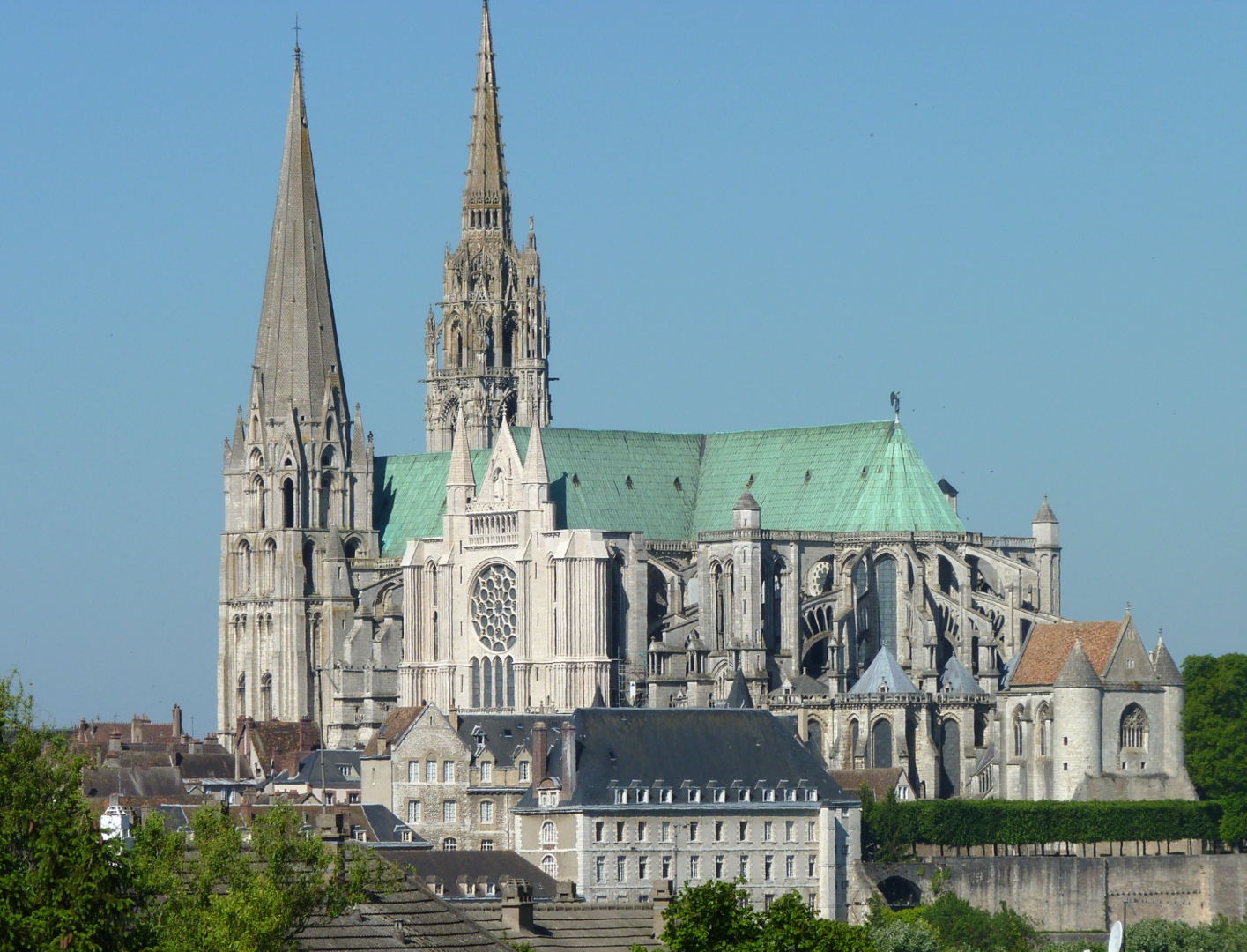 Chartres Gothic Cathedral
Chartres Gothic Cathedral Modeling I technically started with the third tier of the structure of the Canterbury Cathedral, rather than the second tier. Because we work with modular pieces and texture atlases, I find it easier to work from the complete cathedral, then remove any additional geometry. It also meant that the last tier would have most of the same layout as the modern cathedral, minus some of the later additions.
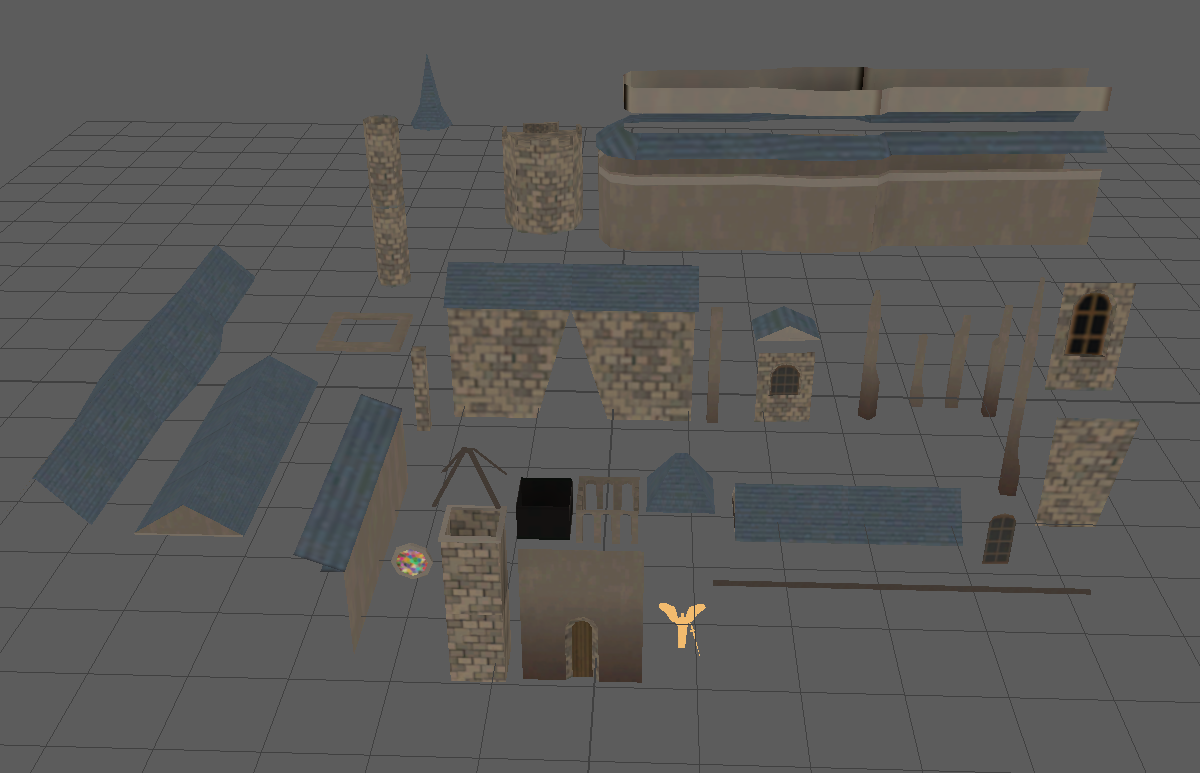 Modular pieces used for building the Cathedral
Modular pieces used for building the CathedralWith the modular pieces ready, it was then just a question of assembling the cathedral.
The Gothic Cathedral - Tier 3 We could see in the final version of the Cathedral that a lot of areas had been raised since the time of the second, so I simply made minor tweaks to the height of some walls and roofs, while preserving the original UV. The back of the cathedral had also been extended and rebuilt, with the addition of two new structures. The south-west tower was rebuilt, but not the north-west tower as of yet: that happened later historically.
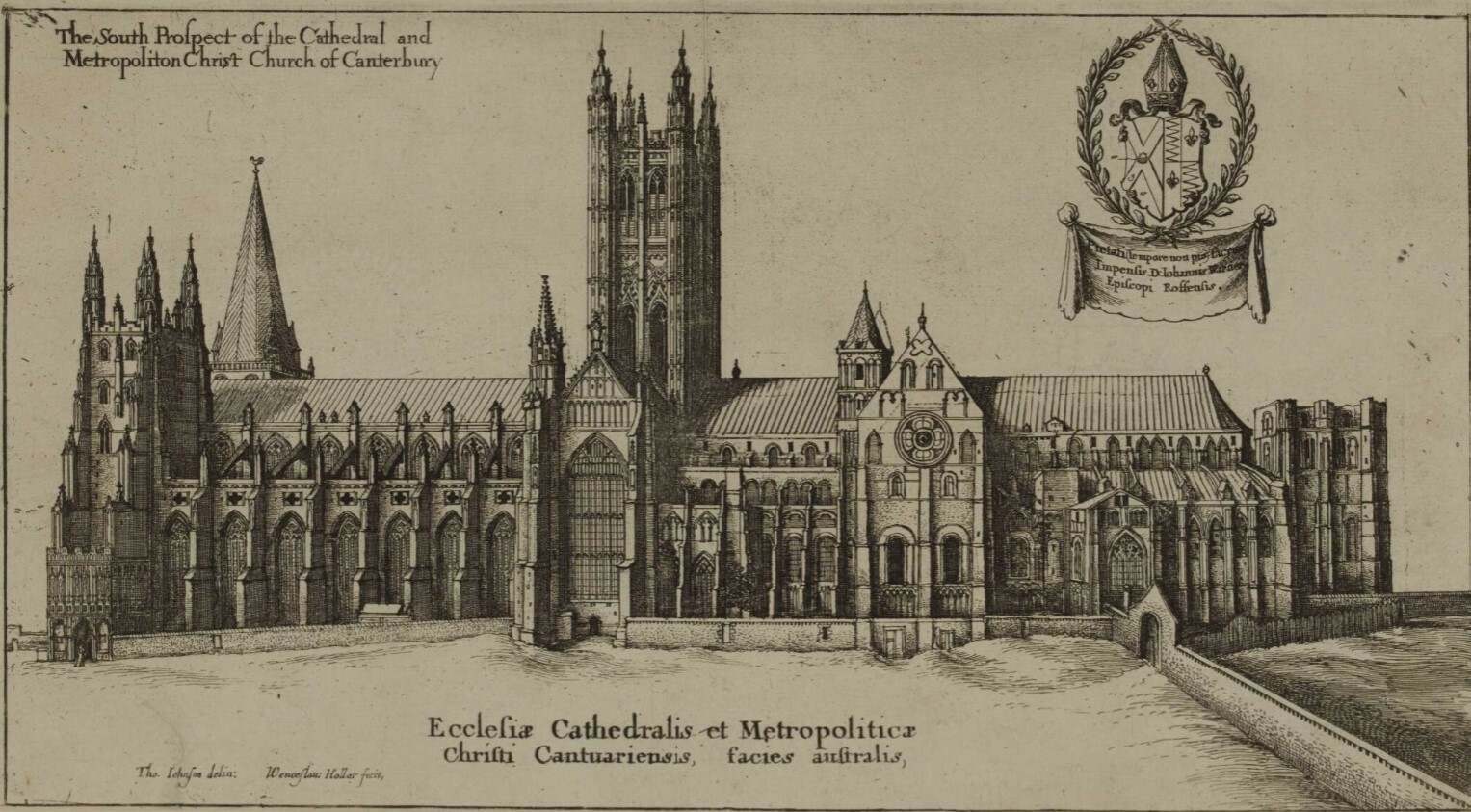 The cathedral with the towers in the front. The main tower however was a new construction past CK3’s timeline.
The cathedral with the towers in the front. The main tower however was a new construction past CK3’s timeline.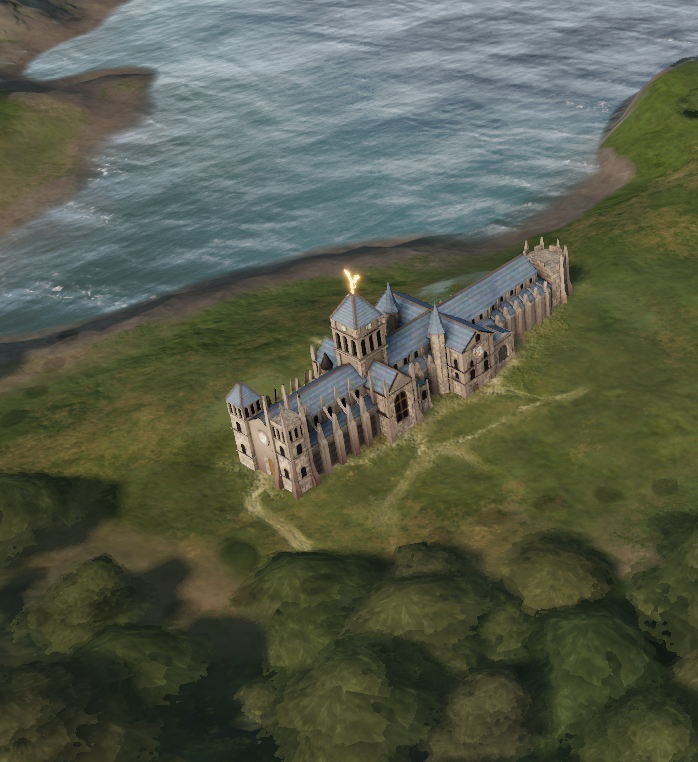 Canterbury Cathedral - Tier 3
Canterbury Cathedral - Tier 3The third tier takes on a Gothic style, with flying buttresses along the length of the cathedral, and it also puts a golden angel on the pinnacle of the main tower.
Basing and Decal In order for us to be certain that our holdings will be placed correctly on the map, we extend the ‘basement’ of the mesh into the ground to accommodate for the map’s height differences.
This ensures we have no areas free flying in the air. Usually this is a bigger issue for holdings than monuments, as monuments have a single specific place on the map where they exist.
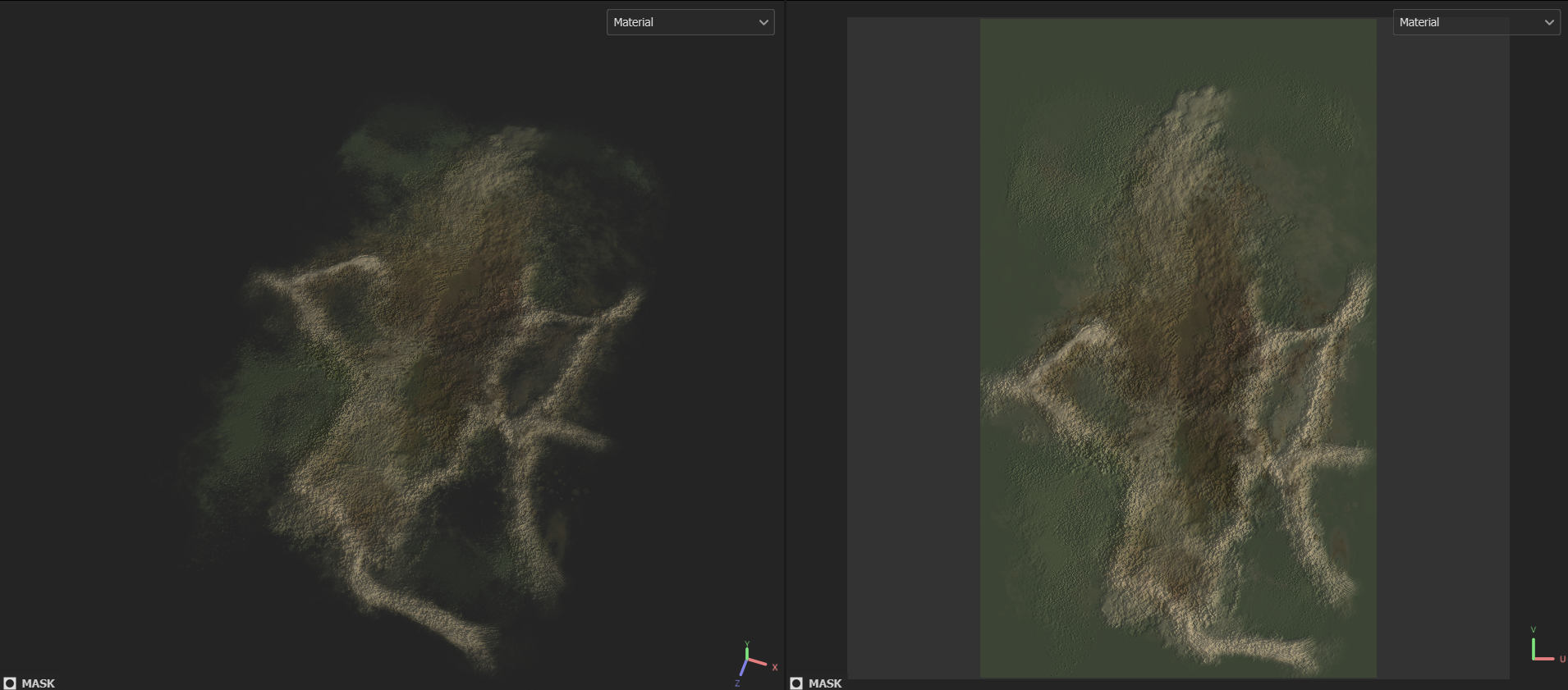 Decal texture in Substance Painter
Decal texture in Substance PainterWe also create decals that show a more interesting ground variation around the structure. In my case, I painted out some roads to give life to the area. Some color variation to the grass to better blend in with the rest of the map, and darker areas where the cathedral would be located. The decal plane is on average twice the size of our building.
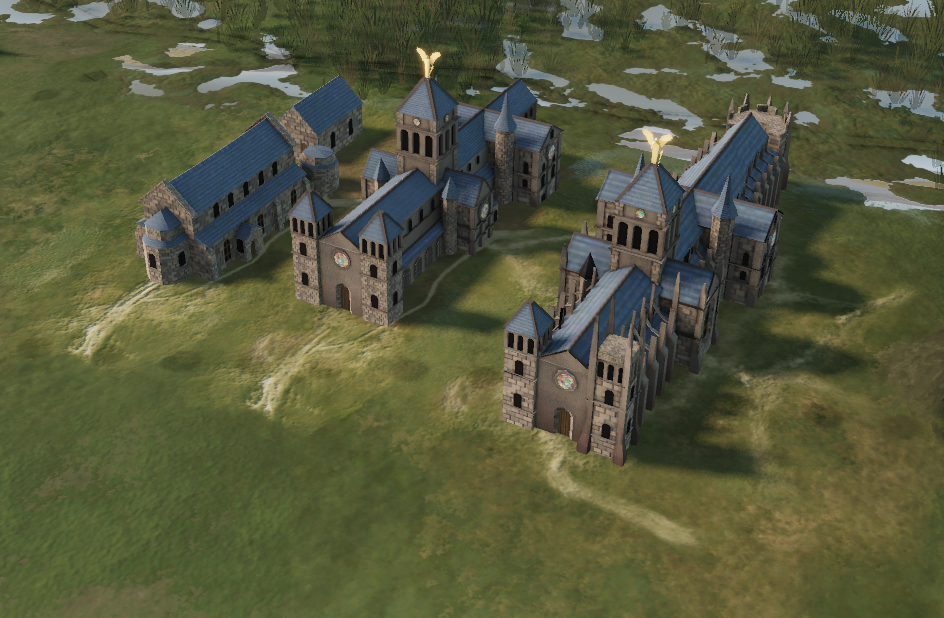 Anglo-Saxon church , Romanesque Cathedral, Gothic Cathedral T1 - T2 - T3
Anglo-Saxon church , Romanesque Cathedral, Gothic Cathedral T1 - T2 - T3After all the buildings were done and I was happy with the progression from tier 1 to tier 2 and tier 3, I could finalize the UV’s. We use two UV maps to layout the textures: one is for the ambient occlusion that we bake in, and the other for the texture atlas. The texture atlas lets us reuse textures to save on performance. I did the baking in marmoset with a low poly to low poly set up. Normally you have a high poly to bake down to the low poly mesh, but I was only after the ambient occlusion.
Bonus Bridge Update A new set of cultural stone bridges will be added over the world, replacing some of the old wooden bridges and overall making it a bit clearer where the safer river crossings are. We will be adding a total of four standard bridge types, for Western Europe, the Mediterranean, the Middle East, and Indian regions.
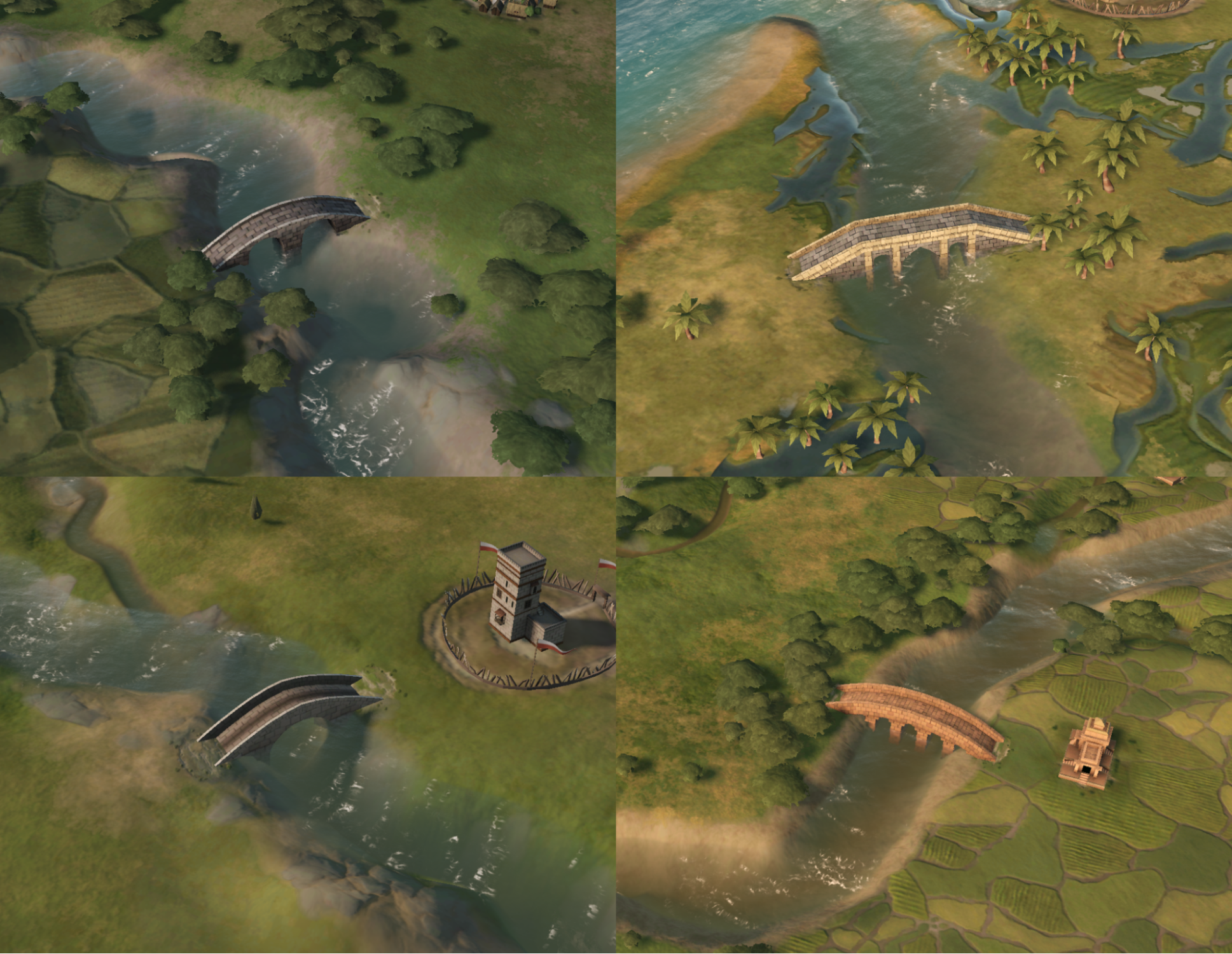
These bridges have been based on historical examples sampled from these regions. The Western and Mediterranean bridges are based on arched bridges from Europe, with the appropriate local flairs. The Middle Eastern bridge is based upon Sassanid designs like the Marnan and Kohneh bridge, among others, and are mostly found in the regions around modern Iran and Iraq. The Indian bridges take their inspiration from the Athernala bridge in eastern India.
 [discord.gg]
[discord.gg]













 [discord.gg]
[discord.gg]